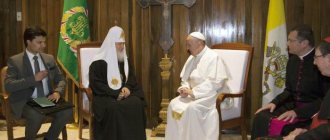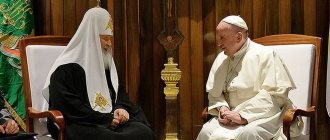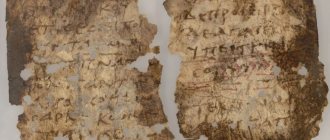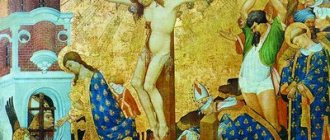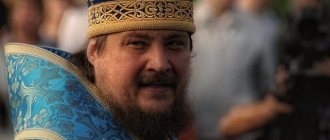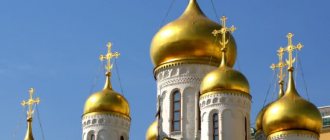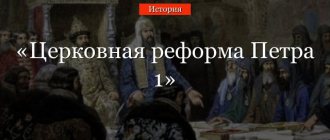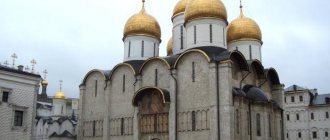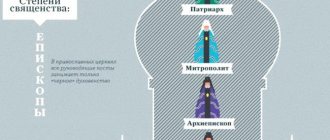On July 18, 1870, Pope Pius IX proclaimed the dogma of the infallibility of popes. In any case, very, very many people understand the Latin word Infallibilitas this way.
Particularly impressionable people cite, among other things, the finale of Pius IX’s elegant formula: “Whoever, God forbid! “If anyone dares to object to this definition of ours, let him be anathema.”
Overall it turns out really scary. Not only can the Pope by default not sin, but those who doubt this will face excommunication from the Church.
The reality, however, is even worse than it seems. The fact is that Pope Pius IX gave his flock a serious concession.
Article on the topic
The dad who tried. How John Paul II saved the authority of Catholicism
First, he was not talking about infallibility at all. Only about the “inability to be mistaken.” And even then not always, but only ex cathedra, that is, “from the pulpit” - when the pope officially speaks as the head of the Church about fundamentally important issues of faith. In all other respects, the pontiff is like others: “He is not protected from committing sins and needs repentance and confession.”
Secondly, the flock, despite the “anathema,” could finally breathe easy. For the simple reason that in practice the idea of the complete and true infallibility of popes has existed in the West since the Middle Ages. And it was diligently hammered into the heads of “good Catholics.” Just like that - just in case.
But the cases were different. Sometimes such specimens sat on the throne of St. Peter that one might wonder how the Roman Church did not collapse under the weight of their sins and even criminal offenses.
The conditional top includes the most remarkable personalities. Each of them was called “the worst disgrace in the entire history of the Church,” but life showed that this dubious title could be challenged. And not without success.
Pope John XII.
John XII
Eight years of his presence on the throne of St. Peter closes a characteristic period in the history of the papacy, which is called in a beautiful word: “Pornocracy.” The literal translation is “Power of Whores.” Indeed, Rome was then actually ruled by two women from the noble family of Theophylacts - Theodora and Marozia . Mother and daughter. Both had, as they now say, “reduced social responsibility.” For 60 years of the 10th century, they awarded papal tiaras to their lovers, and then to the children of these lovers. Some of it even passed on to the grandchildren.
John XII was precisely the grandson of Marozia. As they say, “from the young, but early.” Having become pope at the age of 18, he, as contemporaries wrote: “Stained the throne of St. Peter with all kinds of vices and crimes.”
For example, purely church ones: “Without communion, he served mass”, “Ordained deacons at the wrong time, and in the stables”, “Provided bishops for money and once installed a ten-year-old boy as bishop in the city of Tudertine”, “Robbed churches and openly raged, not hiding his satanic deeds,” “When playing dice, he called on the names of Jupiter, Venus and other evil spirits.” “Not only did he not attend the morning and canonical church services, but he was not even protected by the sign of the cross.”
Article on the topic
33 days of Smiling Dad. Is it true that the Vatican does not like reformers?
He also noted in the field of debauchery and incest: “He lived with Stefania , his father’s concubine,” “He lived with Anna , his niece,” “The Holy Palace turned into a house of debauchery and an abode of indecent whores.” And also in the field of pure criminality: “ Benedict , his godfather, which is why he died,” “ John , the cardinal-subdeacon, ordering him to be castrated,” “He caused fires and looting.”
He was deposed, but he fought for power, and could have won if not for an annoying mistake: “One night, when dad was staying outside the city in the house of a married woman, the devil struck him in the temple so hard that he died.”
“The devil hit the temples” - that’s what they called apoplexy back then. In other words, John XII died of a stroke while making love - from overexertion.
Pope John XXIII.
Christianity in the 1st century AD did not know church organization, officials, cult, clergy, dogmas; instead of priests there were prophets, teachers, apostles, preachers who came from the ordinary mass of believers and were believed to have charisma, that is, the ability to prophesy, teach, perform miracles, heal, and so on. Any Christian could call himself a charismatic and prophesy. If he had a sufficient number of adherents, he actually often led the affairs of the community. From the middle of the 2nd century, leadership in Christian communities gradually passed to bishops, among whom, by the 4th century, the greatest influence was gained by the Roman ones, who owned large lands and, as bishops of the capital of the Roman Empire, claimed a special position in the church. The transfer of the capital of the Roman Empire to Constantinople in 330, then the division of the empire in 395 and the deposition of the last emperor of the Western Roman Empire in 476 contributed to the growth of the political independence of the Roman bishop, who remained the only representative of power in Rome. Since the 5th century, Roman bishops appropriated the title “pope” (from the Greek word pappas - father, mentor). Leo I in 440-461 obtained from the Roman emperor the publication of an edict on the subordination of all bishops to the papal court and on giving the decisions of the pope the force of law. After the fall of the Western Empire, the popes found themselves formally dependent on the Byzantine emperors and their governors in Italy, the exarchs of Ravenna. The geographical distance of Rome from Constantinople literally obliged the popes to seek independence from Byzantium. At the same time, the popes sought to maintain spiritual control over the empire, although already in those years the differences between the Western and Eastern churches were significant. At the beginning of the 8th century, the popes managed to get out of the control of Constantinople, but they failed to maintain at least formal supremacy over the Eastern Church. The schism that occurred in 1054 forever divided Christians into Catholics and Orthodox.
Papal States in the 8th - 13th centuries
Meanwhile, finding itself without the forceful support of Constantinople, the papacy became dependent on the barbarians - the Ostrogoths and Lombards - and was forced to seek support from the growing state of the Franks. In 756, thanks to the gift of Pepin the Short, the Papal States were created and the beginning of the temporal power of the popes was laid, to justify which the documents “The Gift of Constantine” (8th century) and the “False Isidore Decretals” (9th century) were fabricated. The popes found themselves dependent on the Ostrogothic and Frankish kings, and then on the emperors of the Holy Roman Empire.
The 11th-13th centuries were a period of strengthening of the papacy, which used the Cluny reform movement in the fight against the emperors for investiture. The Concordat of Worms in 1122, which ended the struggle for investiture, strengthened the power of the pope over the bishops. The rise of the papacy was also facilitated by the papal bull of 1059 on the election of popes only by cardinals, without the participation of the rest of the clergy and secular magnates, while the emperor retained only the right to subsequently approve the pope (previously, popes, like other bishops, were elected by the clergy and feudal nobility, and since X centuries, emperors actively interfered in elections); The Lateran Council of 1179 established that at least 2/3 of the votes of the conclave participants were required to elect a pope. Gregory VII, Innocent III and Boniface VIII even claimed papal supremacy over secular sovereigns. At the same time, the papacy placed itself above church councils.
"Great Schism" in 1378-1417
The papacy sought to spread Catholicism outside Western Europe, including in Rus', although without success. At the end of the 11th century, the popes, seeking to expand their power, became the initiators and organizers of the crusades. The popes fought against anti-feudal popular movements that were of the nature of heresies. To combat heresies and opposition to church authority, the Inquisition was established in the 13th century. The political role of the pope in medieval Europe was determined by the fact that the Catholic Church he headed was at that time the center of the feudal system and surrounded the feudal system with an aura of divine grace.
Reformation of the 16th century
As centralized states took shape in Europe, the pope's influence weakened. In France, from the 13th century, the so-called Gallicanism developed, which sought the independence of the French Catholic Church from Rome. As a result of defeat in the fight against royal power in France, the popes became dependent on the French kings and, under their pressure, moved their residence from Rome to Avignon in the 14th century (the so-called “Avignon Captivity of the Popes”). The return of the popes to Rome in 1377 did not strengthen their position. The decline in the authority of the pope was also facilitated by the “Great Schism” of 1378-1449, when the papal throne was occupied simultaneously by two or three popes (the modern church recognizes only one of them as legitimate, while the others are declared antipopes). In the highest church circles and among representatives of secular feudal lords, the so-called conciliar movement, or conciliarism, arose, putting forward the idea of the supremacy of church councils over the power of popes. The struggle that unfolded at the Basel Council of 1431-49 between supporters of the conciliar movement and the papacy ended in the victory of the latter, but in reality the papacy was unable to restore its former significance. The Reformation of the 16th century and the formation of Protestant churches led to the loss of the position of the pope in a number of European countries. However, the Counter-Reformation and, especially, the Council of Trent of 1545-63 somewhat strengthened the position of the pope.
Counter-Reformation at the end of the 16th-17th centuries
With the strengthening of national states in Europe, the papacy was forced to abandon its claims to political dominance over secular sovereigns and switched to a policy of supporting secular power in the states of Western Europe. The bourgeois revolutions were met with hostility, and until the middle of the 19th century the papacy remained the support of feudal-monarchical forces. From the second half of the 19th century, the papacy began to move closer to reactionary bourgeois circles on the basis of a joint struggle against the labor movement and socialism. Pius IX published the Syllabus (List of Errors) in 1864, in which he condemned democratic freedoms, socialism, communism, and demanded the preservation of the temporal power of the pope. The First Vatican Council of 1869-70 proclaimed the dogma of papal infallibility. The popes' policy towards the Soviet Union was openly hostile. In 1930, Pius XI declared a crusade against the USSR, in 1933 he signed a concordat with Hitler’s Germany, in 1937 he issued an encyclical against communism, and in 1949 he signed a decree excommunicating communists. The changing balance of forces after the Second World War forced the popes to set a course for adapting the church to the modern era, both in matters of cult, doctrine, organization, and in the field of international politics.
Until 1871, the Holy See owned a huge auxiliary sovereign territory, which occupied almost the entire central part of the Apennine Peninsula. This territory is known as the Ecclesiastical State, the Papal States, the Papal State. The Pope, as a secular sovereign, sometimes transferred territories belonging to the Holy See under full secular government, thus producing secular feudal vassals in the person of rulers appointed by him. In 1870, during the pontificate of Pius IX, the troops of the Sardinian king Victor Emmanuel II under the command of Garibaldi invaded the territory of the Church State, suppressed the resistance of the military formations of the Holy See with many times superior forces and captured Rome. In 1871, the Kingdom of Italy was proclaimed, and Victor Emmanuel became its king. The Holy See was deprived of its auxiliary territories. However, no one dared to encroach on the Pope himself, members of the Roman Curia and papal courtiers. The residence of the Holy See, the Vatican, remained inviolable. The Kingdom of Italy unconditionally and fully recognized all ranks and titles of nobility that were granted by the Holy See from 1871 to 1929, during the period of formal absence of a sovereign auxiliary territory. Although the Holy See was never deprived of its unique sovereignty, however, in 1871 it lost the ability to grant fiefs, mint coins and collect duties and taxes.
In 1929, Italy and the Holy See formalized their relationship in the Lateran Accords and formally acknowledged each other as sovereign entities, with Italy formally returning the Vatican City and the Pontiff's summer residence of Castel Gandolfo to the full jurisdiction of the Holy See.
Vatican City State
Currently, the Vatican is the smallest state in the world with an area of 44 hectares. It is located entirely within the territory of Rome. The real legal status of the Vatican in international law is an auxiliary sovereign territory of the Holy See. The sovereignty of the Vatican is not independent, but stems from the sovereignty of the Holy See. The Vatican is used only as the seat of the Holy See, the papal court and its staff. Diplomatic relations with other states are established not with the Vatican, but with the Holy See, which is the basic sovereign entity. Diplomatic missions of foreign countries are accredited to the Holy See, not to the Vatican City State. Foreign embassies and representative offices accredited to the Holy See, due to the small territory of the Vatican, are located in Rome, so that, for example, the Italian capital may have its own embassy.
The Holy See is a theocratic electoral monarchy headed by the Roman Pontiff (Pope), elected for life by a conclave (college of cardinals). The Apostolic Constitution “Universi Dominici Gregis”, approved by John Paul II on February 22, 1996, defines the following procedure for choosing the pope. Elections begin no earlier than 15 and no later than 20 days after the death of the previous head of the church. In accordance with the constitution and centuries-old tradition, they take place in the Sistine Chapel, which at this time becomes completely inaccessible to outsiders. Only the electors, as well as the secretary of the conclave and his assistants, can be there. Members of the conclave have no right to receive any information from outside, use telephones, read newspapers or watch television. Even their communication with each other is limited. There is no formal list of candidates. As in the days of early Christianity, when any member of the community, not necessarily a priest, could formally become a bishop, any male Catholic can formally be elected pope. In practice, the choice is made among the cardinals. The last non-cardinal elected to the Holy See was Pope Urban VI. In addition, in the 20th century, the unofficial term “papabile” appeared, which refers to the most likely candidates for the position of pope, although in practice a cardinal from among the papabiles does not always become pope. During elections, cardinals write the name of the candidate on a regular piece of paper, and they do this in such a way that the elector cannot be identified by his handwriting. If no candidate receives two-thirds of the votes, the name sheets are burned and wet grass is added to the fire, which gives the smoke a black color. This is how the people gathered in front of the chapel in the square learn that the pope has not been chosen. Each day there are three rounds of elections (one in the afternoon and two in the evening). After three days of inconclusive elections, a break is announced. The elections then last for another seven days. If during this time the pope could not be chosen, then the list of candidates may be limited to two names of those who received the majority of votes in the previous round. When the voting is over and the pope is elected, the head of the College of Cardinals formally asks the elect about his desire to become pope and asks him to choose a new name. The decisive ballots are then burned along with the dry straw. The white color of the smoke over the Sistine Chapel is a signal that the pope has been elected. Following this, the traditional phrase “Habemus Papam” (“We have a pope”) is pronounced from the balcony of the papal palace, the name of the new pontiff is announced, and the newly elected one himself gives the apostolic blessing to the city and the world - “Urbi et orbi.”
The Roman Pontiff has three inseparable functions: - As a secular sovereign in the status of a monarch (with the qualifications of a sovereign prince); — As the Bishop of Rome, he is the Head of the Catholic Church and its highest ruling hierarch; — As the sovereign of the Vatican City State (auxiliary territory in the status of a sovereign principality).
The official title of the Pope is “Bishop of Rome, Vicar of Christ, Successor of the Prince of the Apostles, Supreme Pontiff of the Universal Church, Patriarch of the West, Primate of Italy, Archbishop and Metropolitan of the Roman Province, Sovereign of the Vatican City State, Servant of the Servants of God.” The power of the pope is the highest and legally complete authority over the entire Catholic (Western Christian) Church, independent of any human power and extending not only to matters of faith and morals, but also to the entire administration of the church. The Pope exercises the supreme legislative power in the church: the Pope (and the Ecumenical Council) has the right to issue laws binding on the whole Church or part of it, interpret them, change or repeal them.
The Pope has the supreme canonical, apostolic authority in the Church. In matters of faith and morals, the pope monitors the purity of doctrine, that is, he rejects pseudo-teachings, directs the spread of the faith (missionary activities), convenes ecumenical councils of the Catholic Church, conducts their meetings (personally or through persons authorized by him), approves their decisions, postpones or dissolves councils . The Pope has the highest judicial power in the Church. Any legal case can be submitted to him as the first instance. It has sole jurisdiction over cardinals, nuncios and bishops accused of criminal offences. The Pope decides cases in the third instance on appeals in ecclesiastical trials. It is forbidden to appeal to a secular court against a verdict passed by the pope. The Pope has the highest executive power in the church: he establishes, changes and abolishes bishoprics; appoints, confirms, transfers and removes bishops; fills vacancies, manages church property at the highest level, exercises the right to ordain as blessed and saints. The Pope is the guarantor of the universality and unity of the Catholic Church. Since the pope is the guarantee of the unity of the church, the papal power is sovereign. Through the pope, parts of the church also act in full force. The unity of the pope is necessary to maintain the rule of law and to maintain order within the church. The Roman Church is autocratic and tolerates neither democracy nor aristocracy. Without a pope there is not even an Ecumenical Council. And, therefore, the autocracy of the pope, as a form of government that embodies everything, is accompanied by infallibility.
Popes
| St. Peter | 42/43-64/69 |
| St. Lin | 56/69-76/81 |
| St. Anaclete (Clet) | 76/81-88/92 |
| St. Clement I | 88/92-97/102 |
| St. Evariste | 98/99-105/108 |
| St. Alexander I | 105/109-115/119 |
| St. Sixtus I (Xist I) | 114/117-124/128 |
| St. Telesphore | 125/129-138/139 |
| St. Gigin | 138/139-140/142 |
| St. Pius I | 140/146-154/161 |
| St. Aniket | 150/157-163/168 |
| St. Soter | 162/168-170/177 |
| St. Eleutherius | 171/177-185/193 |
| St. Victor I | 189-199 |
| St. Zephyrin | 199-217 |
| Nataliy (anti-pope) 1 | 199-? |
| St. Calixtus I | 217/219-222/223 |
| St. Hippolytus (antipope) | 217-235 |
| St. Urban I | 222/223-230 |
| St. Pontian | 230-235 |
| St. Anter | 235-236 |
| St. Fabian | 236-250 |
| St. Cornelius Novatian (anti-pope) | 251-253 |
| St. Lucius I Novatian (antipope) | 253-254 |
| St. Stephen I Novatian (anti-pope) | 254-257 |
| St. Sixtus II Novatian (antipope) | 257-258 |
| St. Dionysius | 259-268 |
| St. Felix I | 269-274 |
| St. Eutychian | 275-283 |
| St. Guy (Kai) | 283-296 |
| St. Marcellinus | 296-304 |
| St. Marcellus I | 308-309 |
| St. Eusebius | 309 or 310 |
| St. Miltiades (Melchiades) | 310/311-314 |
| St. Sylvester I | 314-335 |
| St. Mark | 336 |
| St. Julius I | 337-352 |
| Liberius Felix II (antipope) | 352-357 |
| Liberius | 357-366 |
| St. Damasius I Ursinus (anti-pope) | 366-367 |
| St. Damasius I | 367-384 |
| St. Siricium | 384-399 |
| St. Anastasius I | 399-401 |
| St. Innocent I | 401-417 |
| St. Zosima | 417-418 |
| St. Boniface I Eulalis (antipope) | 418-419 |
| St. Boniface I | 419-422 |
| St. Celestine I | 422-432 |
| St. Sixtus III | 432-440 |
| St. Leo I the Great | 440-461 |
| St. Gilary | 461-468 |
| St. Simplicius | 468-483 |
| St. Felix III (II) 2 | 483-492 |
| St. Gelasius I | 492-496 |
| Anastasius II | 496-498 |
| St. Symmachus Lawrence (antipope) | 498-506 |
| St. Symmachus | 506-514 |
| St. Gormizd | 514-523 |
| St. John I | 523-526 |
| St. Felix IV (III) 2 | 526-530 |
| Boniface II Dioscorus (anti-pope) | 530 |
| Boniface II | 530-532 |
| John II | 533-535 |
| St. Agapit I | 535-536 |
| St. Silverius | 536-537 |
| Vigilius | 537-555 |
| Pelagius I | 556-561 |
| John III | 561-574 |
| Benedict I | 575-579 |
| Pelagius II | 579-590 |
| St. Gregory I the Great | 590-604 |
| Sabinian | 604-606 |
| Boniface III | 607 |
| St. Boniface IV | 608-615 |
| Adeodate I (Deusdedit) | 615-618 |
| Boniface V | 619-625 |
| Honorius I | 625-638 |
| Severin | 638/640-640 20 |
| John IV | 640-642 |
| Theodore I | 642-649 |
| St. Martin I | 649-653 |
| St. Eugene I | 654-657 |
| St. Vitaly | 657-672 |
| Adeodate II | 672-676 |
| Domn (Don) | 676-678 |
| St. Agathon | 678-681 |
| St. Leo II | 682-683 |
| St. Benedict II | 684-685 |
| John V | 685-686 |
| Konon | 686-687 |
| St. Sergius I Theodore II (anti-pope) Paschal (anti-pope) | 687 |
| St. Sergius I | 687-701 |
| John VI | 701-705 |
| John VII | 705-707 |
| Sisinny | 708 |
| Konstantin | 708-715 |
| St. Gregory II | 715-731 |
| St. Gregory III | 731-741 |
| St. Zachary | 741-752 |
| Stefan (II) 3 | 752 |
| Stephen II (III) | 752-757 |
| St. Paul I Theophylact (antipope) | 757 |
| St. Paul I | 757-767 |
| Constantine II (antipope) | 767-768 |
| Philip (anti-pope) | 768 |
| Stephen III (IV) | 768-772 |
| Adrian I | 772-795 |
| St. Leo III | 795-816 |
| Stephen IV (V) | 816-817 |
| St. Paschal I | 817-824 |
| Evgeniy II | 824-827 |
| Valentine | 827 |
| Gregory IV | 827-844 |
| Sergius II John VIII (antipope) | 844 |
| Sergius II | 844-847 |
| St. Leo IV | 847-855 |
| Anastasius III (anti-pope) | 855 |
| Benedict III Joanna ("Pope Joanna", John VIII) 4 | 855-858 |
| St. Nicholas I the Great | 858-867 |
| Adrian II | 867-872 |
| John VIII | 872-882 |
| Marin I | 882-884 |
| St. Adrian III | 884-885 |
| Stephen V (VI) | 885-891 |
| Formosa | 891-896 |
| Boniface VI | 896 |
| Stephen VI (VII) | 896-897 |
| Novel | 897 |
| Theodore II | 897 |
| John IX | 898-900 |
| Benedict IV | 900-903 |
| Leo V | 903 |
| Christopher (antipope) 5 | 903-904 |
| Sergius III | 904-911 |
| Anastasius III | 911-913 |
| Landon | 913-914 |
| John X | 914-928 |
| Leo VI 6 | 928/929 |
| Stephen VII (VIII) 6 | 928/929-931 |
| John XI | 931-935 |
| Leo VII | 936-939 |
| Stephen VIII (IX) | 939-942 |
| Marin II | 942-946 |
| Agapit II | 946-955 |
| John XII | 955-963 |
| John XII Leo VIII 7 | 963-964 |
| Leo VIII 7 Benedict V 7 | 964 |
| Leo VIII 7 | 964-965 |
| John XIII | 965-972 |
| Domn II 8 | 972, 973-974 or 974 |
| Benedict VI | 973-974 |
| Boniface VII (antipope) (1) | 974 |
| Benedict VII | 974-983 |
| John XIV | 983-984 |
| Boniface VII (antipope) (2) | 984-985 |
| John XV 9 | 985-996 |
| Gregory V | 996-997 |
| Gregory V John XVI (antipope) | 997- 998 |
| Gregory V | 998-999 |
| Sylvester II | 999-1003 |
| John XVII 10 | 1003 |
| John XVIII | 1004-1009 |
| Sergius IV | 1009-1012 |
| Benedict VIII Gregory VI (antipope) | 1012 |
| Benedict VIII | 1012-1024 |
| John XIX | 1024-1032 |
| Benedict IX (1) | 1032-1044 |
| Sylvester III 11 | 1045 |
| Benedict IX (2) | 1045 |
| Gregory VI | 1045-1046 |
| Clement II | 1046-1047 |
| Benedict IX (3) | 1047-1048 |
| Damasius II | 1048 |
| St. Leo IX | 1049-1054 |
| Victor II | 1055-1057 |
| Stephen IX (X) | 1057-1058 |
| Benedict X (antipope) | 1058-1059 |
| Nicholas II | 1059-1061 |
| Alexander II | 1061 |
| Alexander II Honorius II (antipope) | 1061-1064 |
| Alexander II | 1064-1073 |
| Legitimate Popes | Antipopes - henchmen of emperors | ||
| St. Gregory VII | 1073-1085 | Clement III | 1080-1100 |
| Victor III | 1086-1087 | Theodoric | 1100 |
| Urban II | 1088-1099 | Adalbert | 1102 |
| Paschal II | 1099-1118 | Sylvester IV | 1105-1111 |
| Gelasius II | 1118-1119 | Gregory VIII | 1118-1121 |
| Calixtus II | 1119-1124 |
| Celestine II (anti-pope) | 1124 |
| Honorius II | 1124-1130 |
| Innocent II Anacletus II (anti-pope) | 1130-1138 |
| Innocent II Victor IV (antipope) | 1138 |
| Innocent II | 1138-1143 |
| Celestine II | 1143-1144 |
| Lucius II | 1144-1145 |
| Evgeniy III | 1145-1153 |
| Anastasius IV | 1153-1154 |
| Adrian IV | 1154-1159 |
| Alexander III Victor IV (anti-pope) 12 | 1159-1164 |
| Alexander III Paschal III (antipope) | 1164-1168 |
| Alexander III Calixtus III (anti-pope) | 1168-1178 |
| Alexander III | 1178-1179 |
| Alexander III Innocent III (antipope) | 1179-1180 |
| Alexander III | 1180-1181 |
| Lucius III | 1181-1185 |
| Urban III | 1185-1187 |
| Gregory VIII | 1187 |
| Clement III | 1187-1191 |
| Celestine III | 1191-1198 |
| Innocent III | 1198-1216 |
| Honorius III | 1216-1227 |
| Gregory IX | 1227-1241 |
| Celestine IV | 1241 |
| Innocent IV | 1243-1254 |
| Alexander IV | 1254-1261 |
| Urban IV | 1261-1264 |
| Clement IV | 1265-1268 |
| Gregory X | 1271-1276 |
| Innocent V | 1276 |
| Adrian V | 1276 |
| John XXI 13 | 1276-1277 |
| Nicholas III | 1277-1280 |
| Martin IV 14 | 1281-1285 |
| Honorius IV | 1285-1287 |
| Nicholas IV | 1288-1292 |
| St. Celestine V | 1294 |
| Boniface VIII 15 | 1294-1303 |
| Benedict XI 16 | 1303-1304 |
| Clement V 19 | 1305-1314 |
| John XXII 19 | 1316-1328 |
| John XXII 19 Nicholas V (antipope) | 1328-1330 |
| John XXII 19 | 1330-1334 |
| Benedict XII 16 19 | 1334-1342 |
| Clement VI 19 | 1342-1352 |
| Innocent VI 19 | 1352-1362 |
| Urban V 19 | 1362-1370 |
| Gregory XI 19 | 1370-1378 |
| Popes of the Great Schism | Antipopes of the Great Schism | ||
| Urban VI | 1378-1389 | Clement VII | 1378-1394 |
| Boniface IX 15 | 1389-1404 | Benedict XIII 16 | 1394-1409 |
| Innocent VII | 1404-1406 | Benedict XIII (Avignon Line) Alexander V (Pisan Line) | 1409-1410 |
| Gregory XII | 1406-1415 | Benedict XIII (Avignon Line) John XXIII (Pisan Line) | 1410-1415 |
| Martin V | 1417-1431 | Benedict XIII | 1415-1423 |
| Evgeniy IV | 1431-1447 | Clement VIII Benedict XIV 16 | 1423-1429 |
| Nicholas V | 1447-1455 | Benedict XIV 17 | OK. 1430-1437 |
| Felix V 2 | 1439-1449 | ||
| Calixtus III | 1455-1458 |
| Pius II | 1458-1464 |
| Paul II | 1464-1471 |
| Sixtus IV | 1471-1484 |
| Innocent VIII | 1484-1492 |
| Alexander VI 18 | 1492-1503 |
| Pius III | 1503 |
| Julius II | 1503-1513 |
| Leo X | 1513-1521 |
| Adrian VI | 1522-1523 |
| Clement VII | 1523-1534 |
| Paul III | 1534-1549 |
| Julius III | 1550-1555 |
| Marcellus II | 1555 |
| Paul IV | 1555-1559 |
| Pius IV | 1559-1565 |
| St. Pius V | 1566-1572 |
| Gregory XIII | 1572-1585 |
| Sixtus V | 1585-1590 |
| Urban VII | 1590 |
| Gregory XIV | 1590-1591 |
| Innocent IX | 1591 |
| Clement VIII | 1592-1605 |
| Leo XI | 1605 |
| Paul V | 1605-1621 |
| Gregory XV | 1621-1623 |
| Urban VIII | 1623-1644 |
| Innocent X | 1644-1655 |
| Alexander VII 18 | 1655-1667 |
| Clement IX | 1667-1669 |
| Clement X | 1670-1676 |
| Innocent XI | 1676-1689 |
| Alexander VIII 18 | 1689-1691 |
| Innocent XII | 1691-1700 |
| Clement XI | 1700-1721 |
| Innocent XIII | 1721-1724 |
| Benedict XIII 16 | 1724-1730 |
| Clement XII | 1730-1740 |
| Benedict XIV 16 | 1740-1758 |
| Clement XIII | 1758-1769 |
| Clement XIV | 1769-1774 |
| Pius VI | 1775-1799 |
| Pius VII | 1800-1823 |
| Leo XII | 1823-1829 |
| Pius VIII | 1829-1830 |
| Gregory XVI | 1831-1846 |
| Pius IX | 1846-1878 |
| Leo XIII | 1878-1903 |
| St. Pius X | 1903-1914 |
| Benedict XV 16 | 1914-1922 |
| Pius XI | 1922-1939 |
| Pius XII | 1939-1958 |
| St. John XXIII | 1958-1963 |
| Paul VI | 1963-1978 |
| John Paul I | 1978 |
| John Paul II | 1978-2005 |
| Benedict XVI 16 | 2005-2013 |
| Francis | 2013-present |
Additional statistical information Show
John XXIII
Is it possible to make an outright criminal and blasphemer, for whom the gallows and the fire simultaneously cry, a pope? The case of John XXIII shows that it is possible.
His name in the world is Balthazar Cossa . One of the most dangerous pirates of the Mediterranean Sea. His two older brothers were hanged for piracy. He was much luckier - having started his career at the age of 13, by the age of 16 he had won the laurels of a desperate thug.
Then - suddenly - he entered the University of Bologna at the Faculty of Theology. He was an excellent student, but he was even better at spoiling girls and robbing townspeople. As a result of one of the skirmishes, he ended up in prison, from where the same pirates extracted him, stupidly taking Bologna by storm.
Such figures, having found themselves in severe trouble, promise the Lord to leave the “murderous trade” and then lead an exclusively spiritual life.
John XXIII, caught in a storm, promised exactly the same thing. But he followed not so much the spirit as the letter of the law. After being rescued, he was captured by Pope Urban VI . And since then he has truly led a spiritual life. In any case, a clergyman.
Article on the topic
A fit of madness. The story of a murder at the court of the Pope
Having quickly curried favor and removed his competitors, he himself becomes Pope. By the way, he makes a fundamental decision to arrest Jan Hus .
Perhaps he would have been forgiven for some Czech heretic. But his artistry as Supreme Pontiff overflowed his patience. He was charged with 74 counts, 20 of which were decided not to be made public - they were so terrible and disgusting. However, what was announced is also impressive.
Rape of more than 300 nuns. An attempt to sell the relics of St. John for 50 thousand florins. Cohabitation with his brother's wife. Corruption of a family - a mother, her son and her daughters. Group sodomy involving monks. Denial of the afterlife. Disbelief in the resurrection of the dead.
For anyone else, a fire would be enough for such things. But the system does not surrender its own. The deposed pope was even given back the rank of cardinal, and he died quietly in this rank five years after his deposition. Since then, the name John itself was considered cursed - the popes did not take it for more than 500 years.
Pope Alexander VI.
